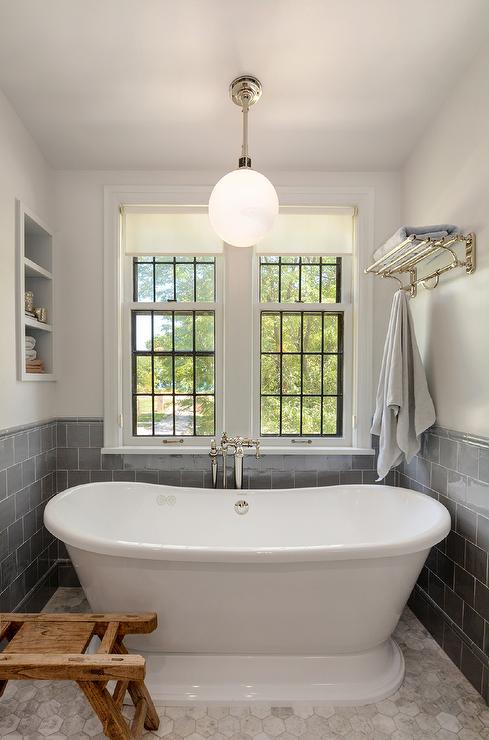You will need to have the following tools and supplies-
- Drop clothes
- 24″ and 108″ wide painters plastic (I like the Xcell to Finish because it is designed to tear by hand and comes in a handy dispenser box)
- Blue masking tape for taping plastic around furniture and on floors
- Yellow Frog Tape
- A pole sander and replacement sanding screens
- 2.5″ Wooster Alpha Angle Sash paint brush (It balances so nicely and holds a razor edge.)
- Wooster Pelican paint bucket
- Painters tray
- Speed roller cage
- Extension handle
- 3/8″ nap speed roller covers (Wooster are nice, but microfiber or White Dove work, too)
- Philips and Flat screwdrivers
- A couple of rags (one for a pocket cloth)
- A couple of rectangle sponges
- A 2 gallon pail (yellow is nice)
- Krud Kutter detergent
- A platform step ladder
- A painters bench
- An area work light
- A bucket of 20 minute drywall compound (with a lid to keep it dry.)
- Fibafuze 2″ mesh tape
- A drywall pan and 4″, 6″, 10″, and 12″ stainless drywall knives.
- Ceiling paint (flat white.)
- Enough paint for 2 coats of wall color.
- Paint for the trim (unless there is no trim, or the trim is stained.)
- First, make sure that all pictures, clocks, and decorative items are removed from the walls and placed in another room in a safe place that will not be disturbed by accident.
- Lay down large drop clothes on the floor in the center of the room.
- Next, move furniture away from the walls, onto the center drop clothes to create a 30″ wide work area along the walls, if at all possible.
- Cover the furniture with painters plastic and tape it with blue tape to make sure it is secure.
- Lay down hallway drop clothes around the parameter of the room, or roll the edge of the center drop clothes to the base of the walls.
- If the room has painted trim, use 1.8″ Yellow Frog Tape to mask the floor at the base of the trim.
- If the room has stained and varnished trim, use 1.8″ yellow Frog Tape to protect the edges of the trim from paint specks.
- Using your platform ladder, remove any window shades and blinds. Set them in a safe place in another room.
- Remove any receptacle covers and switch covers. Tape the screws into the holes. Set them in the other room with the window shades and blinds.
- Remove any light fixtures. If that is not practical, loosen them a bit if you can safely do so, and mask them with Frog Tape.
- Look for any damaged areas that need to be repaired or nail holes that need to be filled. If you find any, fill them with 20 minute mud. Corner damage and cracks need Fibafuze mesh tape embedded in the mud.
- Wipe down the walls with a sponge and some water in a bucket. If you notice any oily or grimy spots, use the Krud Kutter detergent to make sure it doesn’t bloom through your paint coats.
- Sand over your walls with the pole sander.
- Pour about an inch into your Wooster Pelican paint bucket and cut in around the edges of the ceiling, any light fixtures, and any ceiling trim details.
- Roll the paint onto the ceiling. If this is new construction, or there are any drywall patches, you will need to do 2 coats. If not, there will be dull patches or color variations.
- Next, paint the walls. Cut in around the top and bottom of the walls, and around any switches or receptacles.
- Roll paint on the walls. If there is a change in paint color, or any drywall repairs, you will need to paint at least 2 coats.
- Once the walls are dry, paint the trim, (unless it is stained and varnished) This can be a great way to show off your skill, as “cutting in” saves on Frog Tape, and doesn’t risk pulling the fresh wall paint off of the walls.
- Once the trim is painted, remove all of the Frog tape.
- Reinstall fixtures and covers.
- Reinstall shades and blinds.
- Replace the furniture.
- Remove the drop clothes.
